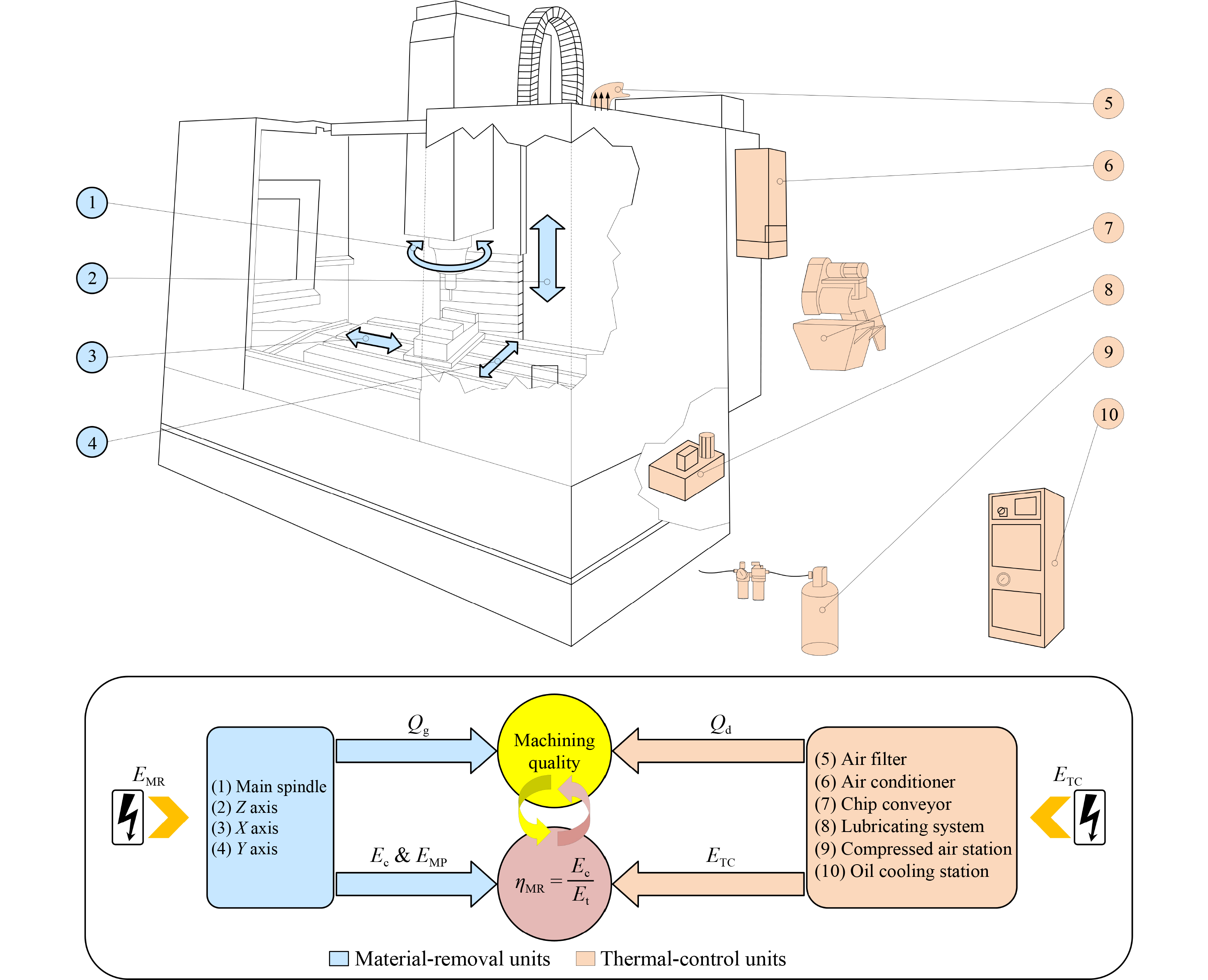In recent years, enormous efforts have been made to investigate the energy consumption characteristics of machine tools. Gutowski et al. [
7] pioneered a machine tool energy consumption model and divided the energy consumption of a machine tool into two parts: variable energy consumption related to material removal (MR) and constant energy consumption of functional parts. Sihag and Sangwan [
8] used a systematic methodology to understand the evolution of research in machining energy and proposed a six-level hierarchical model to understand machining energy classification better. Based on information extracted from NC programs, He et al. [
9] proposed energy models for fixed energy, coolant pump, spindle motor, and feed motors; the proposed models could help process planning designers make robust decisions in selecting a more energy-efficient NC program. Liu et al. [
10] presented a new energy consumption prediction method of the main driving system, and the proposed method can predict the energy consumption before the actual machining with the basic database of the machine tools, workpiece drawing, and planned process planning. Xie et al. [
11] proposed a modeling approach for energy efficiency of machining system that can be used to monitor energy efficiency online and without any extra cutting force dynamometer. Chen et al. [
12] presented a comprehensive literature review of energy-efficient cutting parameter optimization and decomposed total energy consumption into the electrical energy consumption of machine tool and the embodied energy of the cutting tool and cutting fluid. From a data-driven perspective, Katchasuwanmanee et al. [
13,
14] combined the raw machining data and the final performance of quality and efficiency to reduce energy consumption and improve the manufacturing performance of complex machining processes, which has remarkable implications for machine tools to achieve collaborative optimization.

















